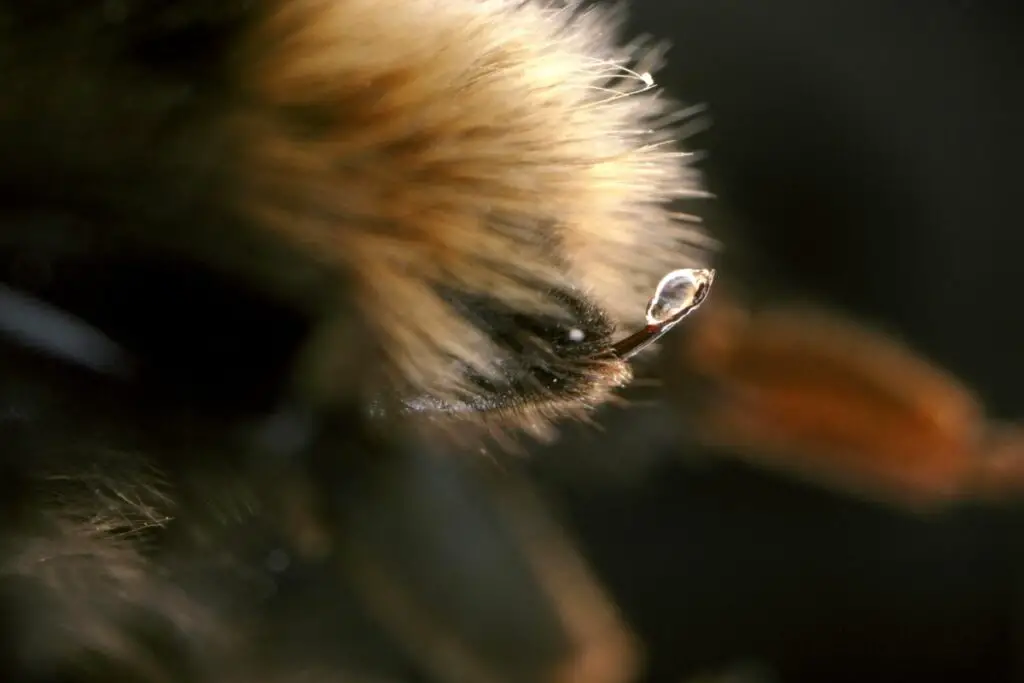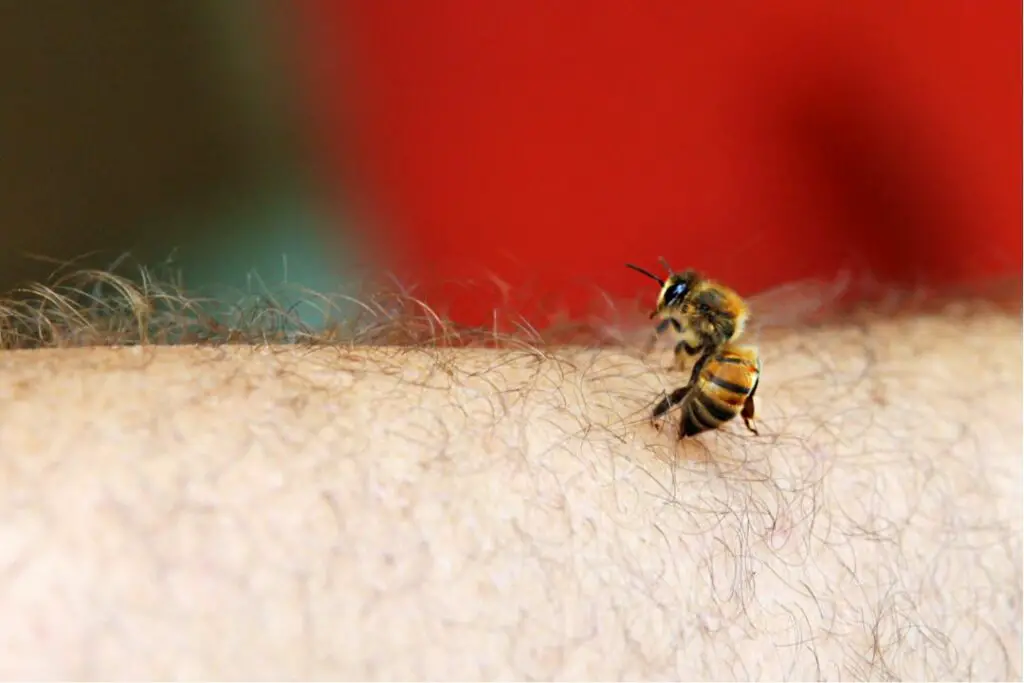Bee stings are acidic. They sit between 4.5 and 5.5 on the pH scale. All female honey bees are equipped with a sting and will use it as a defence if forced to.
When it comes to humans, it’s normally an accidental sting, but it can be a painful experience and even life-threatening if you’re allergic.
So, can you treat mildly acidic bee stings with an alkali to reduce it’s effects?
Can You Neutralise A Bee Sting?
The short answer is no. Rubbing lots of bicarb or baking soda all over your bee sting probably doesn’t affect pain or swelling.
Most importantly, anyone allergic to bee stings should immediately seek medical attention. No amount of alkaline will help.
Theoretically, you should be able to neutralize the acidic bee venom with an alkaline, but the issue lies with how a bee sting works.
The sting is injected into the skin rather than on it, meaning that anything you apply isn’t going to reach the venom.
You could make it more effective by mixing it with water and applying it as a paste to the site of the sting, but this is not something I’m rushing to try.
Even if you could, most of the pain you feel doesn’t come from the bee sting’s acidic level it comes from a little-known chemical called melittin.
When a bee stings, melittin is released into the victim’s skin, disrupting cell membranes.
This causes cells to rupture and release inflammatory agents, translating to the pain and swelling you feel at the site of a sting.

How Should You Treat An Acidic Bee Sting?
Rather than trying to treat the sting’s acidity, more conventional methods work a lot better.
- Prompt Removal of the Stinger: First and foremost, gently scrape the stinger out using a flat-edged object like a credit card. Don’t use tweezers or squeeze the stinger. You’ll release more venom.
- Cold Pack: Apply a cloth-covered ice pack to the sting site for 10 minutes. This helps reduce swelling and ease the pain.
- Pain Relief Medication: Over-the-counter pain relievers like ibuprofen or acetaminophen can help if it’s painful.
- Antihistamines: Oral antihistamines (like diphenhydramine) can reduce itching and swelling. Follow the dosage instructions on the package.
- Hydrocortisone Cream: A topical cream can also ease itching and swelling.
- Aloe Vera: Applying it in its raw form or as a gel can relieve the skin and relieve itching and swelling.
All of the above will do a much better job of relieving discomfort while the melittin does its work, and the acid from the sting quickly breaks down in your body.
Comparing The pH Of Bee Stings To Other Insects
Now, let’s see how bees stack up to other members of the insect world.
| Insect | pH Level of Sting |
|---|---|
| Honeybee | 4.5 – 5.5 (Acidic) |
| Wasp | 6.0 – 7.0 (Alkaline) |
| Fire Ant | Around 4.5 (Acidic) |
| Hornet | Slightly Alkaline |
| Yellow Jacket | Slightly Alkaline |
*Top tip – Wasp venom has a pH of 6.0 to 7, which is practically neutral, so you can use the exact same method as above to treat wasp stings.
Does It Vary Across Bee Species?
The pH of bee venom can vary with environmental influences and bee species. Here are some of the biggest influencers.
- Diet and Habitat: The diet of bees, which can vary based on their habitat, influences their venom composition. Different floral sources can lead to variations in venom constituents and pH levels.
- Climate and Season: Changes in climate and seasonal variations can affect the bee’s metabolism and physiology, potentially altering venom pH. Extreme temperatures might stress the bees, causing changes in venom composition.
- Human Interaction: Pesticides and other environmental chemicals can impact bees’ health, potentially leading to changes in venom characteristics, including acidity or alkalinity.
- Genetic Diversity: Different bee species, and even subspecies, have evolved unique venom compositions. This diversity is a result of adaptation to various ecological niches and predators.
- Age of the Bee: The bee’s age can also play a role. As the bees age, their venom composition can change, possibly affecting their pH level.
Now you know all about stings, buzz over to our next read to find out which bees do and don’t sting you.




